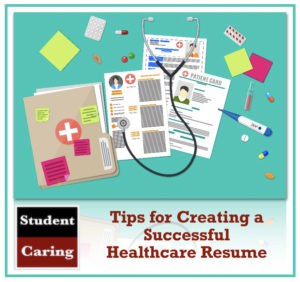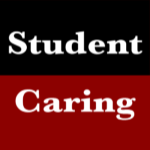 If you’re currently looking for a job in the public health sector, you’re sure to go up against a raft of other candidates when applying for roles. Depending on exactly what kind of public healthcare job you’re after, there may only be a select few positions available each year in your area.
If you’re currently looking for a job in the public health sector, you’re sure to go up against a raft of other candidates when applying for roles. Depending on exactly what kind of public healthcare job you’re after, there may only be a select few positions available each year in your area.
As a result, you need to put together a stand-out resume if you want recruiters to take notice of you. Your CV is the first element of the application process, and if you don’t get it right, you may find you keep getting passed over for interviews, even though you’re suitably qualified and experienced. To ensure this isn’t the case, read on for some top tips for creating a successful healthcare resume you can follow today.
Use a Professional Layout
For starters, don’t just rush into writing your content; you need to ensure you’re using a good layout for your CV that works well for recruiters. Hiring managers often have to read dozens of resumes per day, which means they don’t have much time to spend on each one. As such, you need to create your document in a scannable way that enables readers to see all the important information quickly.
Make your resume reader-friendly by leaving plenty of white space on each page and breaking up large chunks of text with headings and bullet points. Have a variety of sections in your document, and keep paragraphs short.
When it comes to font, choose a common option that’s clear and easy to read. For example, Calibri, Times New Roman and Arial are all good choices. Keep the font a decent size, too, so the words aren’t too small for people to read. Plus, avoid using lots of color, graphics or other gimmicks; you might think they will grab attention, but to most people they just look unprofessional and juvenile.
Include Tailored Information
Next, remember that if you want to get noticed for all the right reasons, you must carefully decide on the information you share in your resume. It’s not enough to just create one document and then use it, as is, for every single job application. To be successful you must tailor your CV each time.
Read over the job ad carefully, numerous times, to see what stands out to you. Make a list of exactly which qualifications, experience and skills you need to include. Be sure to add in keywords listed in the advertisement as this can help you to not fall at the first hurdle if the recruiter uses software to sort through applications initially.
Let’s say you’re going for a public health job. You need to include all your education and showcase how what you learned during your degree(s) will help you in the role at hand. If you completed an MPH online, for instance, include this in your qualifications section, but also look for other areas where you can talk about how you’ve used what you learned to cut costs, increase efficiency or otherwise problem-solve in jobs. Try to link in to what is specifically required for the role you’re now applying for, too.
When it comes to talking about your career history, try to be specific. Instead of listing out generalized duties, look  for ways to include set results that you achieved in the past. Utilize numbers and percentages wherever possible to show how you can make a difference to an employer’s success rate.
for ways to include set results that you achieved in the past. Utilize numbers and percentages wherever possible to show how you can make a difference to an employer’s success rate.
In addition, research the company you want to work for to learn as much as you can about its history, way of doing things, likely future pathways and corporate culture. Then, use this information to tailor your CV accordingly. You don’t just want to show that you have the skills, experience and qualifications for the role, but you also want to prove that you have the right personality and traits which will help you to get along well with coworkers.
Carefully Check for Errors
Lastly, never submit a resume that you haven’t first spent a decent amount of time editing and proofreading. It may sound simple enough, but lots of people only give their document a cursory glance and therefore don’t pick up on issues that could turn readers off. To give yourself the best possible chance of success, read over the document multiple times, including at least once aloud. Plus, get someone else to look over it as they will have fresh eyes and pick up on things you missed. In particular, try to spot spelling and grammatical errors, typos, sentences which don’t make enough sense or which have words missing and inconsistencies in the layout or font.
###
October 16, 2018

0 Comments